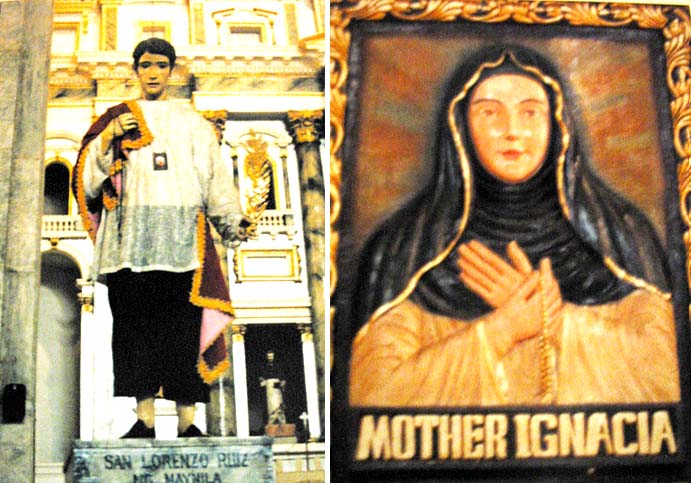Excerpted from Tulay Monthly, Chinese-Filipino Digest 1, no. 6 (November 13, 1988), p. 7.
Throughout the long history of the Chinese presence in the Philippines, they have made significant contributions to Philippine life – not just in the field of commerce but more importantly to the propagation of Christianity and the perpetuation of the Filipino religious culture.
The Chinese art of printing
The strongest impact of the Philippine-Chinese on Christianity was brought about by the art of printing which the Chinese taught to the Filipinos.
The first three books ever printed in the Philippines were all religious books — they were the Doctrina Christiana en lengua Tagala, the Doctrina ChrisLiana en lengua Tsina and the Apologia de la Verdadera Religion (Apology for the True Religion) or the Shih Lu, which is in Spanish and Chinese, respectively.
All these three books were printed in the year 1593. Since there were no indication of the month the books were printed, nobody knows which of these three appeared first. There are strong indications, however, that the Shih Lu came earlier than the Doctrina Christiana.
The Chinese art of printing also brought about faster propagation of the Catholic faith because it enabled the dissemination of religious tracts, catechisms and other religious books.
First saints
The early Chinese who came to settle in the Philippines mixed well with the Filipinos. many of them intermarried with the natives thus giving rise to the phenomenon of Saint Lorenzo Ruiz, our first Filipino saint who is half Chinese. His father is a pure-blooded Chinese.

Mother Ignacia, who is currently being proposed to be the first Filipina saint, is also half Chinese. She is the founder of Beaterio, first Filipino religious mission in the Philippines (now known as the RVM sisters). At the time she entered the church, her father was forcing her to marry a fellow Chinese.
Both St. Lorenzo Ruiz and Mother lgnacia showed that the early Chinese embraced the Catholic faith wholeheartedly.
Churches and other buildings
Many of the famous churches in the Philippines were built by Chinese artisans. San Agustin Church is one of them. All around the San Agustin church are stone lions sculpted by the Chinese to ward off evil.
The Chinese taught the Filipinos how to use lime as a binder for stone structures. The stone masons, skilled carpenters and bricklayers built imposing and sturdy stone structures that have withstood the elements. Among these are our churches and other structures like the Malacañang Palace.

Many religious images, like that of the Nuestra Señora del Rosario in Binondo, have Chinese features because they were hand-carved by Chinese artisans and sculptors.
Church people of Chinese descent
Among the most famous Filipino clergymen who spearheaded protests against Spanish misrule were the three martyred priests of Cavite – Fathers Mariano Gomez, Jose Burgos and Jacinto Zamora – all of whom have Chinese blood running in their veins.
In contemporary times, we have also Filipinos of Chinese descent who have been serving the church well. His Eminence Jaime Cardinal Sin is one shining example, and so are Cardinal Ricardo Vidal, Msgr. Pat Lim, Sister Christine Tan, Sister Dina Ang of ICA, Sister Felisa Lim, Sister Lieu and many others.





